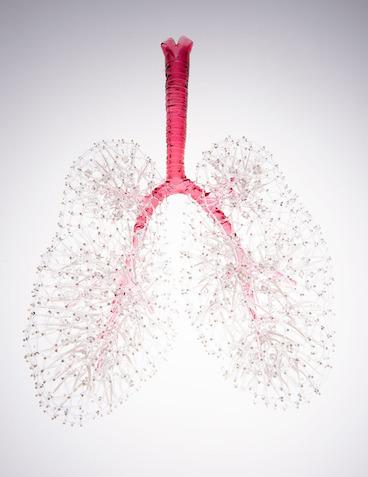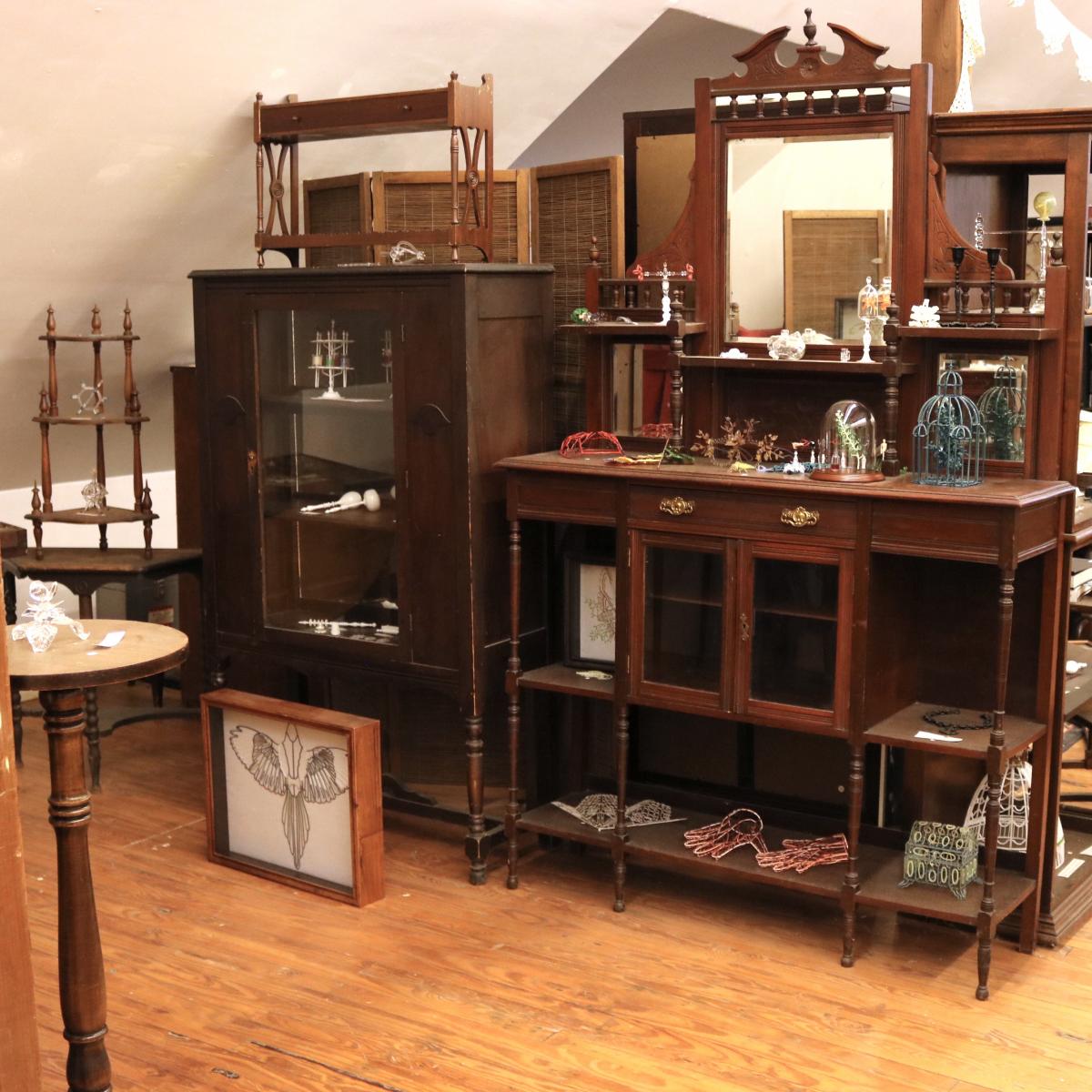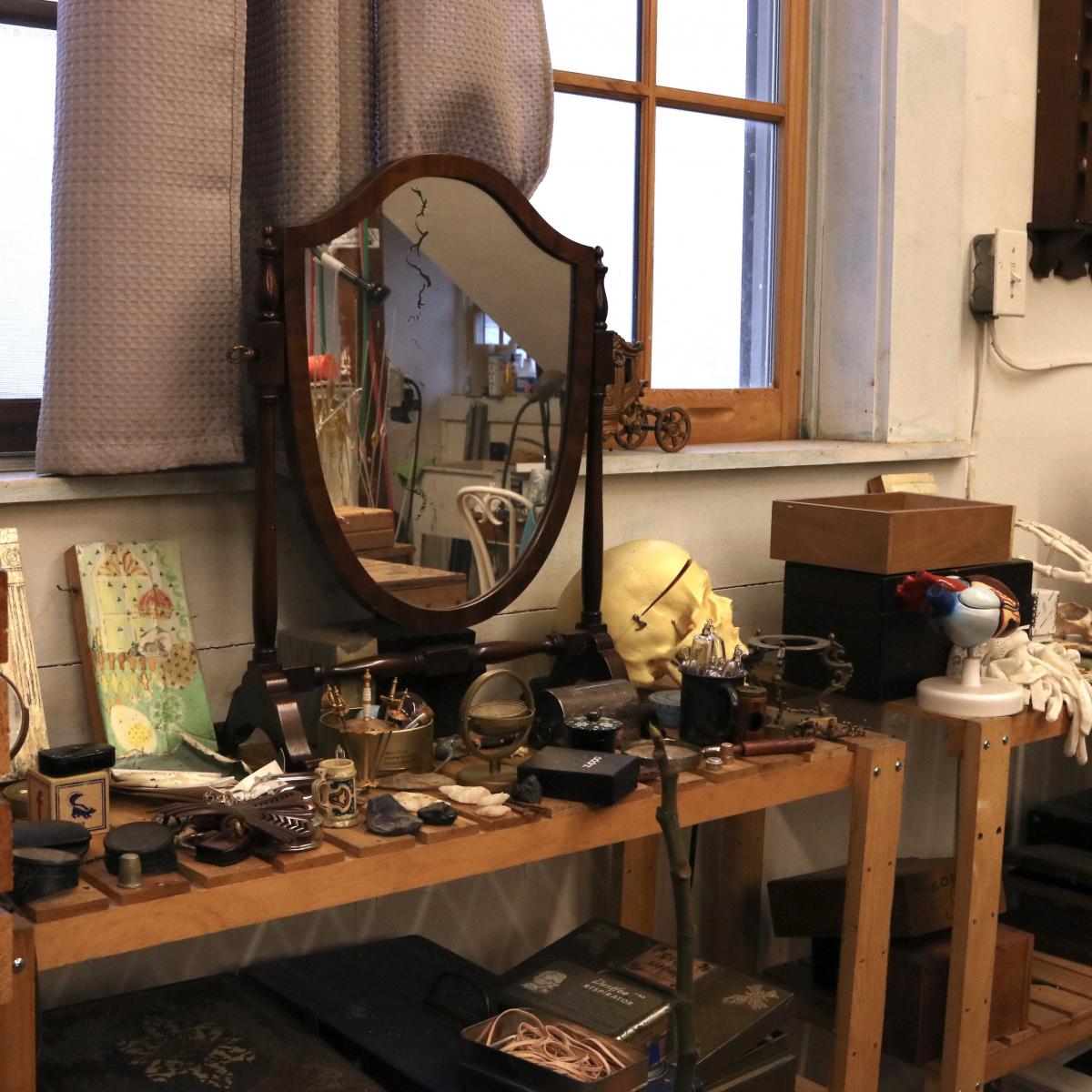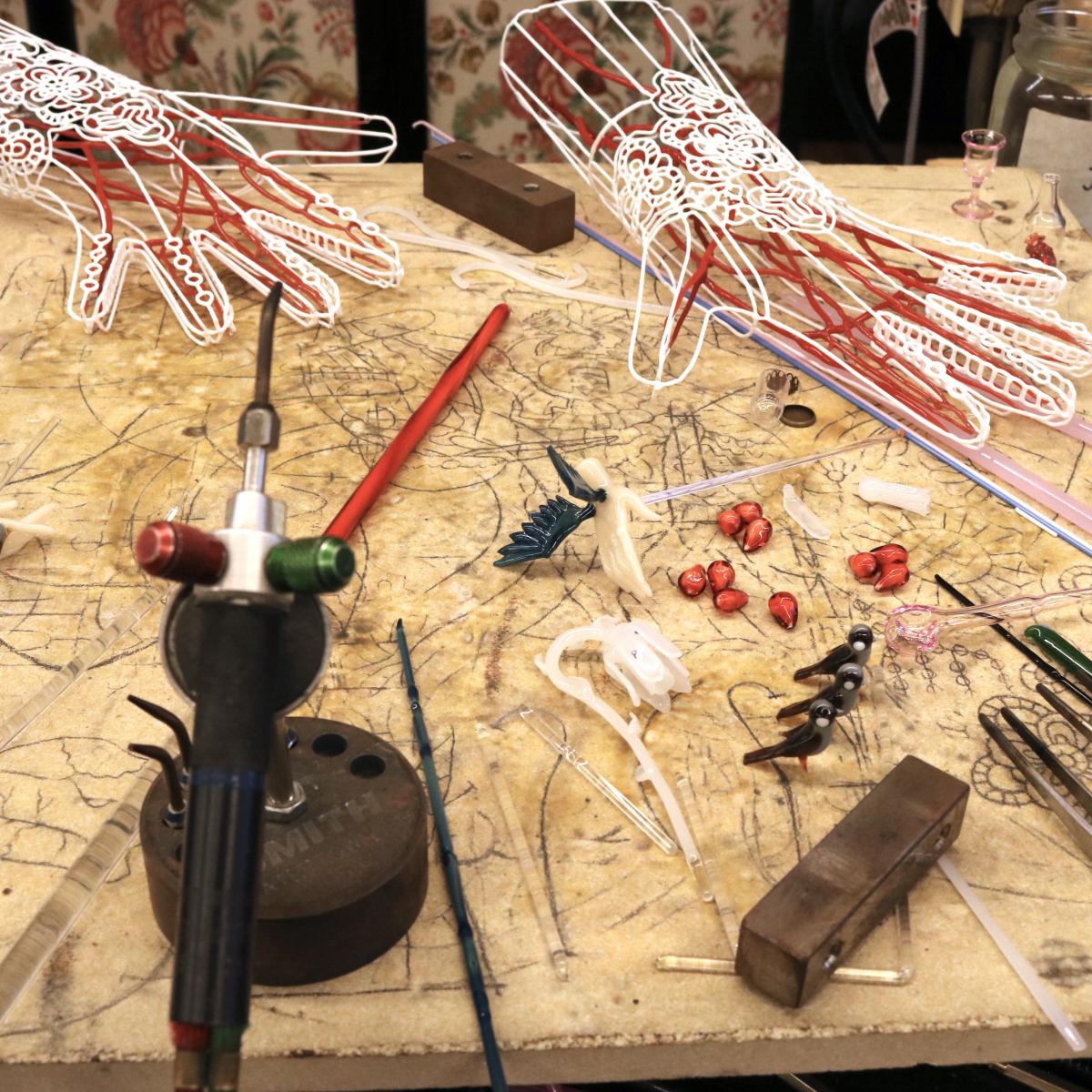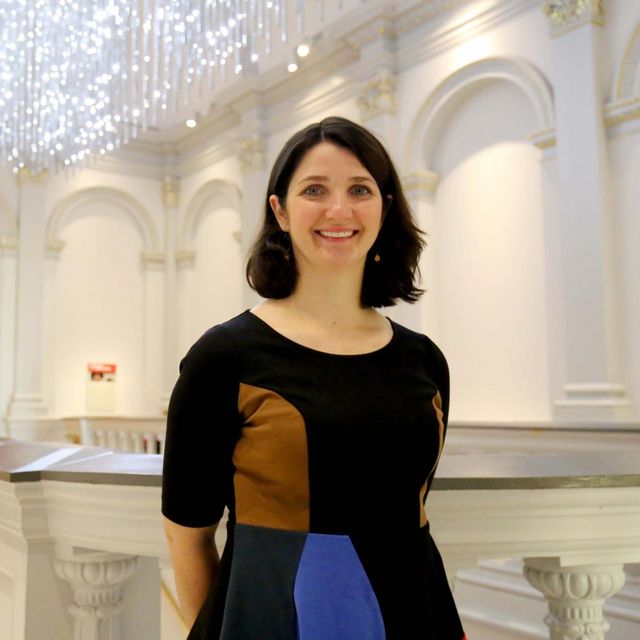
Kit Paulson is currently a resident artist at the Penland School of Craft in the Blue Ridge Mountains of North Carolina. She makes intricate and whimsical glassworks that embody histories of ornamentation, material culture, and natural history. SAAM is acquiring her work, Lungs.
Mary Savig, the Lloyd Herman Curator of Craft at SAAM’s Renwick Gallery, has been collecting firsthand accounts of the dual pandemics, COVID-19 and systemic racism, from artists working with craft-based materials and techniques. In this series, “Making the Most: Craft Practice during the Dual Pandemics,” artists share personal insight into how they responded to the cascade of canceled or delayed programs, workshops, and exhibitions, as well as the demands of social distancing and social justice. Each account brings new understanding to the import of the studio as a space of reflection, creation, and collaboration.
Describe your daily routine during COVID-19.
In times of uncertainty, adhering to a routine can provide some solace. Partially because of that and partially for other reasons, I treat my studio practice as a full-time job, which means arriving in the studio around 9:30 a.m. and staying until 6:30 p.m., Monday through Friday.
How has the pandemic changed your studio practice (for example, describe the effect of lockdowns, exhibitions, collaborations, teaching, shows, and protests).
In recent years, my studio practice involved a lot of traveling and teaching, and the pandemic put an abrupt end to that. I don’t know if I had realized until it was missing that I derive a great deal of inspiration from both. Inspiration from traveling happens from seeing things as a stranger. Inspiration from teaching comes from having to articulate processes in great detail, and as a result, understanding those processes more fully and finding inspiration in that deeper understanding. This means I’ve had to actively hunt for inspiration elsewhere. I’ve been trying to keep up with a habit of daily drawing. I try to take a walk in the woods every day too and have been reading a lot more.
How has your sense of home shifted with the pandemic? For example, how has your relation to food or domestic life changed? How do you connect to others?
At the beginning of the pandemic and lockdowns, I had the odd sense that everything in the outside world had shifted drastically but my life hadn’t changed, at least on a day-to-day level, at all. I get up, I go to my studio, I work, I come home. None of that changed. But it suddenly seemed more monotonous than it ever had before. Partly because of this monotony I started a project that I ended up simply calling “Forty Days.” It was simple: make a finished piece every day as a way of marking time and staying sane and connecting with others (I shared each one on social media daily). It was also a way of harnessing the idea that when one is stuck artwork-wise, the cure is often to make more work until one figures out why one is doing it.
What is drawing your attention these days (i.e., books, film, tv, music, social media, pets, etc.)
I love following the social media accounts of mudlarks, people who dig artifacts up from the banks of the Thames. I get excited about the bits of Roman pottery or handwoven eel traps preserved in the anerobic mud for centuries or Elizabethan pilgrim medals. I’ve re-read some favorite books including Lawrence Weschler’s Mr. Wilson’s Cabinet of Wonders and How To See by George Nelson. I’ve also re-read every P.G. Wodehouse book in my collection (but I guess do that all the time anyway). I canceled Netflix early on in the first round of lockdowns because it felt like I was passively consuming pointless media and I was thinking hard about where I want to allocate my time.
What would you want readers 10/50/100 years from now to know about your life and work during this period?
I suppose I’d want them to know that I kept working. My work has had to shift into more commercial, easily saleable art works, but I have continued to make art and kept the more commercial things close to what’s important in my sculptural practice.
What feels most important going forward?
I feel like I’ve built some momentum with daily practices and projects, and it seems important to continue that momentum and not allow it to dissipate with a return to normal life.














